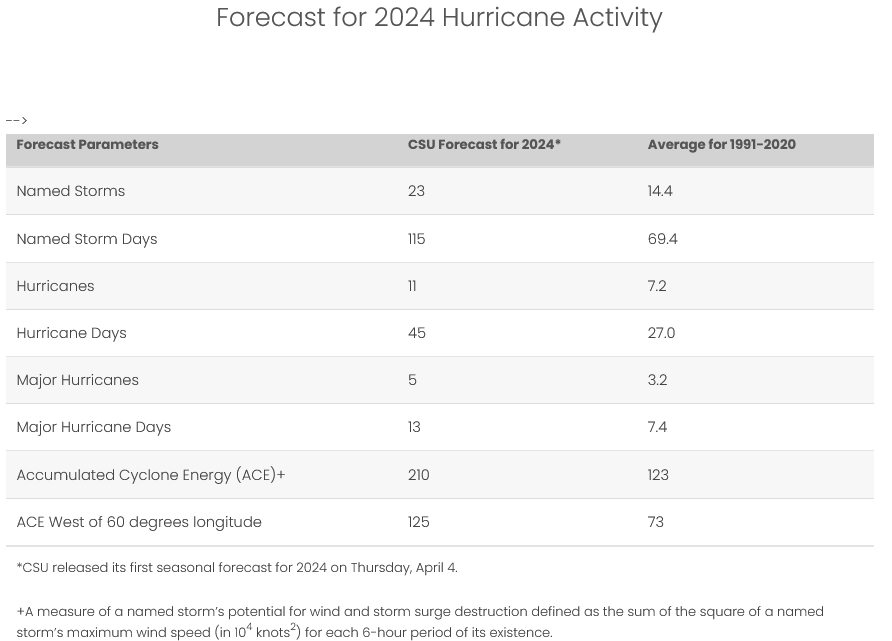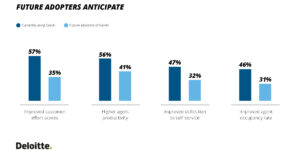An active hurricane season is expected in the Atlantic, with 11 hurricanes and 23 named storms forecast this year, according to Colorado State University hurricane researchers.
While eleven are expected to become hurricanes, five could reach major hurricane strength (Saffir/Simpson Category 3-4-5) with sustained winds of 111 miles per hour or greater.

The team predicts 2024 hurricane activity will be about 170 percent of the average season from 1991–2020.
By comparison, 2023’s hurricane activity was about 120 percent of the average season.
Hurricane Idalia was the most significant hurricane of the 2023 Atlantic hurricane season.
Idalia made landfall at Category 3 intensity in the Big Bend region of Florida and caused 3.6 billion dollars in damage and eight direct fatalities.
Warm tropical and eastern subtropical Atlantic sea surface temperatures are the primary drivers for their prediction, the researchers said.
Above-average water temperatures fuel hurricane formation.
“A warm Atlantic leads to lower atmospheric pressure and a more unstable atmosphere, both conditions favor hurricanes, the CSU researchers added.
El Nino is expected to give rise to La Nina conditions by the peak of hurricane season. These conditions favor Atlantic hurricane formation and intensification.
The prediction of 11 hurricanes for the 2024 Atlantic hurricane season is the highest prediction for hurricanes that CSU has ever issued with their April outlook.
The prior highest April forecast of nine hurricanes.
The report also includes the probability of major hurricanes making landfall:
• 62 percent for the entire U.S. coastline (average from 1880–2020 is 43 percent).
• 34 percent for the U.S. East Coast, including the Florida peninsula (average from 1880–2020 is 21 percent).
• 42 percent for the Gulf Coast from the Florida panhandle westward to Brownsville (average from 1880–2020 is 27 percent).
• 66 percent for the Caribbean (average from 1880–2020 is 47 percent).
Researchers indicate the 2024 hurricane season is exhibiting characteristics similar to 1878, 1926, 1998, 2010 and 2020.
The CSU hurricane research team reminds everyone that April’s forecast may be the least reliable as changes can occur before the hurricane season.
“Our analog seasons were all very active Atlantic hurricane seasons,” said Phil Klotzbach, senior research scientist in the Department of Atmospheric Science at CSU and lead author of the report. “This highlights the somewhat lower levels of uncertainty that exist with this outlook relative to our typical early April outlook.”
Forecast updates will occur on June 11, July 9 and Aug. 6.
The Atlantic hurricane season runs from June 1 to Nov. 30.




















 LexisNexis: Loss Costs Rise for All Home Insurance Perils
LexisNexis: Loss Costs Rise for All Home Insurance Perils  Insurer Chubb Readies $350M Payout Tied to Baltimore Bridge Collapse
Insurer Chubb Readies $350M Payout Tied to Baltimore Bridge Collapse  The Top 15 U.S. Metros with High Exposure to Wildfire Risk
The Top 15 U.S. Metros with High Exposure to Wildfire Risk  Auto Insurance Price Inflation Overstated, Swiss Re Economists Say
Auto Insurance Price Inflation Overstated, Swiss Re Economists Say 